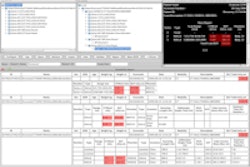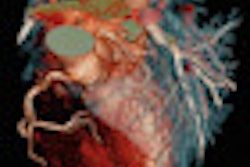A decision-support software tool that requires emergency department physicians to explain why they are ordering CT scans reduced the number of abdominal studies being performed at a Philadelphia hospital by 10%, according to a study presented on Friday at the Society for Academic Emergency Medicine (SAEM) meeting in Chicago.
At two of Penn Medicine's hospital emergency departments in metropolitan Philadelphia, a simple exam query software tool "embedded" between a patient's electronic medical record (EMR) and a computerized physician order-entry (CPOE) system produced the positive results. The tool was triggered when an abdominal CT exam was ordered, forcing physicians to respond to four questions before they could finalize the order.
The tool was part of a study to determine the effect of a stimulus that forced physicians to rethink the necessity of a CT exam. It was put through its paces between July 2011 and March 2012, prior to the planned implementation of a clinical decision-support system for ordering diagnostic imaging exams.
Dr. Angela Mills, medical director of the emergency department of the Hospital of the University of Pennsylvania and an assistant professor of emergency medicine at the Perelman School of Medicine, is conducting a multiyear study to evaluate how electronic interventions can change how emergency physicians order diagnostic imaging exams.
Abdominal pain accounts for 10 million emergency department visits every year in the U.S. But abdominal pain symptoms can be caused by a variety of problems, ranging from a bout of gastrointestinal distress to an ectopic pregnancy, from constipation to an appendix about to burst, or from a hernia to signs of a chronic condition such as Crohn's disease.
"This complex diagnostic face-off, combined with the need to maintain an efficient workflow, both play a huge role as to why emergency physicians tend to lean heavily on CT exams," Mills told AuntMinnie.com. "Most patients with abdominal pain aren't in major danger, but some of the conditions we consider can be fatal within a short amount of time."
She chose to study abdominal CT exams for this reason and also because these scans, along with head CT, are among the most frequently ordered with high radiation doses by emergency physicians.
During the study period, when a physician placed an order using CPOE software for an abdominal CT exam, four questions would appear. The first two asked what the physician thought the primary and, if applicable, secondary diagnosis might be, and offered a menu list of reasons why the exam might be ordered, with a free-text entry field for comments. The third question asked if the person was the primary physician ordering the exam or a resident, and the fourth question asked the physician to rate the pretest probability that the exam would provide a clinical answer.
These steps were intended to prompt the care team to rethink their choice of tests. It also prevented a resident from directly ordering an abdominal CT without the approval of an attending physician.
The tool was used a total of 11,176 times by two Penn Medicine emergency departments, Mills reported. Prior to its implementation, 32.3% of adult patients admitted for abdominal pain received CT scans. When the tool was being used, this dropped to 28%.
After adjusting for various confounding factors, Mills and fellow researchers determined that patients were 10% less likely to undergo a CT scan with the tool in use. In addition, the patients were no more likely to be admitted to the hospital for observation when a CT scan was not ordered.
Next step: RADIANCE
The next phase of the study began several months ago with the implementation of the hospital's internally developed clinical decision-support system. Radiation Dose Intelligent Analytics for CT Examinations (RADIANCE), an open-source software package designed to facilitate dose monitoring, dose reporting, and quality assurance for CT exams, has been used since November 2010 in the radiology department, and now a module designed for ordering physicians has been deployed in all three emergency departments of the university's hospitals.
At the Hospital of the University of Pennsylvania, radiologists protocol every CT exam that is performed. RADIANCE is used to enable radiologists to identify opportunities for protocol optimization and dose reduction, according to Dr. Tessa Cook, PhD, a radiology fellow and the software's lead developer.
RADIANCE incorporates a dashboard and scorecards, which enable careful monitoring of dose data by individual and exam type. By displaying a list of all related prior exams, it also enables radiologists to intervene and notify ordering physicians if a similar exam has been performed recently, or if a patient has had an excessive amount of high-radiation-dose exams.
The open-source software uses optical character recognition to extract structured data from image-based dose sheets produced by CT scanners. It extracts demographic information from the DICOM study header and also dose-related information, including x-ray tube voltage (kV), x-ray tube current (mA), CT dose index volume (CTDIvol), and dose-length product (DLP). Dose and exam data are stored in a relational database for quality assurance analysis.
For ordering physicians, a patient's comprehensive exam record is displayed as it relates to the type of exam ordered and the body part. Other features are also currently being evaluated.
Mills is hopeful that when her colleagues see information provided by RADIANCE on total radiation exposure from previous CT scans, the hospital will see an even greater reduction in abdominal CT scans than in the study presented at the SAEM show. She also hopes that as EMRs become more robust and accessible among unaffiliated hospitals, a similar tool can be used to obtain information about past CT scans of patients.



















